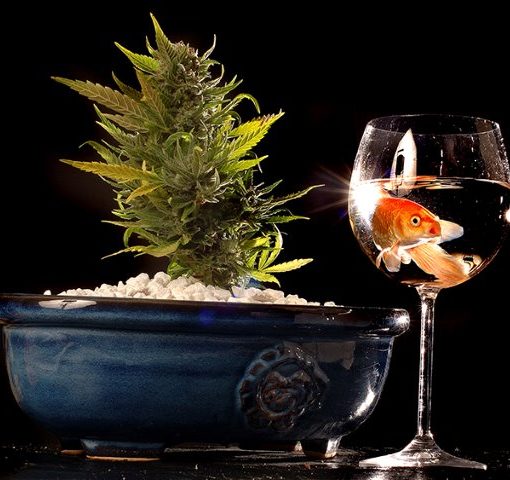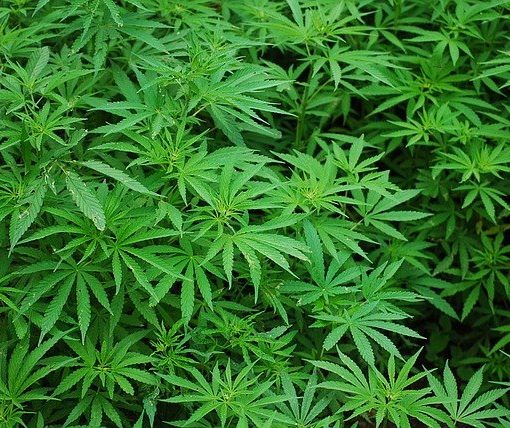THC and CBD. A basic description of both cannabinoids and their properties
Most cannabis users are aware that cannabidiol (CBD) and tetrahydrocannabinol (THC) are two different substances, although for some it is difficult to decipher the difference. We will make a description of these cannabinoids since both come from the cannabis plant and have important differences between them.
We call the cannabis plant marijuana with a THC content greater than 0.3%. CBD can be extracted from marijuana or hemp. Hemp plants are cannabis plants that contain less than 0.3% THC. Marijuana plants are cannabis plants that contain a higher percentage of THC.
We call the cannabis plant marijuana with aTHC content greater than 0.3%. CBD can be extracted from marijuana or hemp. Hemp plants are cannabis plants that contain less than 0.3% THC. Marijuana plants are cannabis plants that contain a higher percentage of THC.
Marijuana is the most consumed substance even in countries where it is illegal. This is due to its THC cannabinoid, which is the psychoactive component of marijuana that provides those who consume it with such a pleasant feeling of feeling “placed.” CBD is produced and sold in the form of gels, gummies, oils, supplements or others, while THC is also available in a variety of forms, such as oils, tinctures, capsules, dietary supplements and more. We can enjoy both cannabinoids when we consume the dried flowers of marijuana.
Both cannabinoids react with the endocannabinoid system of the human body when you take them in any of their existing forms, although the effects are different. We will make a basic description between both cannabinoids and their properties.
THC and CBD. Chemical structure
One of the most important differences between THC and CBD lies in the chemical structure.The chemical structure of CBD and THC have many similarities since both have the same molecular structure of 30 hydrogen atoms, 21 carbon atoms and 2 oxygen atoms. But even with this similarity, there is a small difference in the arrangement of atoms. And it is this difference that causes the difference in the effects of both compounds in the body when we consume one of the two.
The organism of humans and other warm-blooded mammals has endocannabinoids similar to those of CBD and THC. For this reason the cannabinoid receptors of the body allow the reception of CBD or THC. The reaction that occurs between the endocannabinoids of our body and THC or CBD affects the release of neurotransmitters in the brain. Neurotransmitters are chemicals that function as messengers between cells. Functions such as chronic pain, the immune system, sleep and many more are managed by neurotransmitters.
Differences in psychoactivity
Another of the most important differences between THC and CBD lies in psychoactivity. One might think that the psychoactive effects of CBD and THC were the same since both have similar structures. The reality is that they are completely different. While THC is responsible for the psychoactive effect of cannabis, CBD is a non-psychoactive compound. The CBD consumer will not experience psychoactive effects no matter how much he takes. Why?
Because CBD binds very weakly to cannabinoid 1 receptors (cerebral cannabinoids) and even sometimes they do not bind. CBD consumption does not produce a feeling of euphoria in the consumer while THC quickly and easily binds with the cerebral cannabinoid and produces that feeling of euphoria.
Legal status
The evolution of cannabis laws has been enormous in recent years. Some states have legalized marijuana for medicinal reasons. Beyond medical use, 11 states, in addition to Uruguay and Canada, have also legalized the use of marijuana and THC for recreational reasons. If marijuana is legal, both cannabinoids can be accessed. In any case it is very important to know what the laws of a state say about products that contain CBD or THC in any way before deciding to buy them.
Side effects
There is also a big difference between the side effects of both cannabinoids. CBD is a compound that has no adverse side effects even if consumed in large doses. It is not possible to suffer an overdose of CBD. The only possibility of having adverse side effects is due to the interaction of this cannabinoid with other medications that are active in the body.
With THC the story is different. The side effects of THC are short term. The consumption of THC can involve memory loss, dry mouth, increased heart rate and many more. The long-term negative effects of THC are associated with the abusive use of this cannabinoid. This is common among teenagers who abuse THC. Unfortunately, it is not uncommon to see teenagers who abuse cannabis cope with psychiatric pathologies.
Drug test
Both THC and CBD are cannabinoids that are stored in body fat. The body cannot eliminate them in a short time. They can spend weeks in the body after having consumed it for the last time. But drug tests are less likely to detect CBD.
Standard drug tests are designed to detect chemicals related to THC. But when CBD is used, some THC may have been added during production. Therefore, it is possible to test THC, even if you have not used it, if you have been taking CBD.
Benefits
There are hundreds of cannabinoid receptors throughout the human body that cause specific physiological effects. Potential uses of these cannabinoids include the treatment of the following:
Pain
Nausea
Cancer
Loss of appetite and eating disorders
Alzheimer disease
Glaucoma
Multiple sclerosis
Muscle spasms
CBD and THC are effective in treating different diseases. However, there is some variation in the uses of each substance.
People generally use CBD to help treat the following:
Inflammatory bowel disease
Seizures
Depression
Inflammation
Psychosis or mental disorders
Migraines
THC has potential uses in the treatment of some of the following:
Glaucoma
Muscle spasticity
Poor appetite
Insomnia
People can use either compound to help treat:
Pain
Anxiety
Nausea






